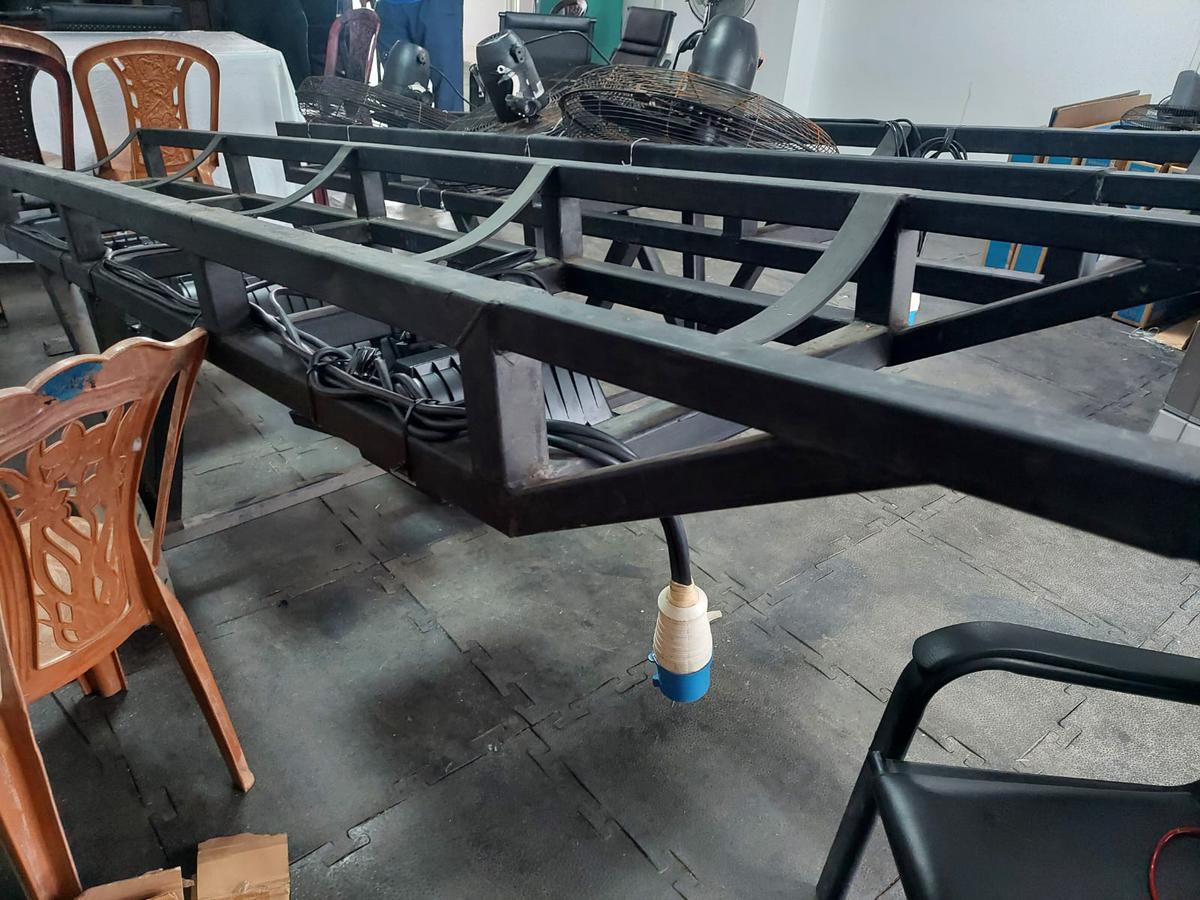
While all eyes were trained on the men in blue and green, hopes rested on the specks of bright orange that bobbed in and out of the field, on the whims of the weather, during the Asia Cup match between India and Pakistan.
The ground staff at the R. Premadasa Stadium in Colombo, also doubling up as weather forecasters, worked tirelessly over two days to enable a result in a high-octane game that was the sole beneficiary of a reserve day in the Super Four stage of the tournament.
ASIA CUP: FOLLOW INDIA VS SRI LANKA LIVE
“In this match, the meteorological department signals were given by our boys,” National Curator Godfrey Dabrera says, forcing a chuckle, three hours ahead of the India versus Sri Lanka match on Tuesday.
It is a third consecutive day on the field not only for the Indian team but also for Dabrera and his band of boys, some of whom have been at the venue since 6:30 AM after returning home past midnight.
The sight of the ground staff kneeling beyond the boundary skirting with the blue covers tucked behind them and dark clouds circling above has been a recurring theme during the rain-marred tournament, which saw the first iteration of the Indo-Pak rivalry being washed out in Pallekele, about 150 kilometres east of Colombo.

National Curator Godfrey Dabrera.
| Photo Credit:
DHRUVA PRASAD
National Curator Godfrey Dabrera.
| Photo Credit:
DHRUVA PRASAD
Though that sight, a harbinger of imminent rain, hasn’t been greeted with enthusiasm, it is the prescience behind it, embodied by Dabrera, that enabled a result on Monday.
“Yesterday, I told them it will rain, then I’ll wait for another shower to pass, and then I’ll clear the covers. That is exactly what happened. After the first shower, I told them we would not remove the water but wait instead. After the second rain, we will remove the water and then the covers,” Dabrera tells Sportstar.
The weather obeyed Dabrera’s instructions to the letter, the covers were removed within 20 minutes of the second shower ending and play resumed by 4:40 PM.
The first day of the game was interrupted by a heavy downpour during the 25th over of India’s innings and play was eventually suspended for the day following another shower at around 8:30 PM. In between, wet patches in the outfield prevented play from resuming. Dabrera believes had the umpires heeded calls from the ground staff earlier, the outfield could have been covered before the rain came gushing down.
“On the first day, both sides were at fault. The umpires also did the damage, and we were also at fault. That big shower came once like a waterfall. The umpires delayed calling the covers and we didn’t pressurize them to call us in. There was a four-to-five-minute delay. We keep them [covers] ready. They [ground staff] can’t stay in front of the LEDs; they have to stay behind them. I give the signal to come in front. That signal didn’t go to the umpires that day,” he says.
ALSO READ: Who is Dunith Wellalage, the spinner who picked up a fifer against India?
It was also Dabrera’s ingenuity that played a role in making a result possible. A ‘heater bulb’ and fans swung into action, much to the intrigue of spectators, to get the conditions fit for play to resume.
“Sometimes we make mistakes, we are all humans. If some water spills on the wicket, we can start within 10 to 15 minutes. We have a heater bulb for drying the wicket. I don’t use it on the ground because the grass will die. The pitch is made of clay. The soil can dry from the air, but clay won’t. These are my inventions, I made them with my boys,” the 60-year-old says.

The fans used to dry the outfield.
| Photo Credit:
DHRUVA PRASAD
The fans used to dry the outfield.
| Photo Credit:
DHRUVA PRASAD
Dabrera has had his task cut out since July when Colombo hosted the ACC Men’s Emerging Cup, followed by the Lanka Premier League and the Asia Cup. By the time the tournament ends, the R. Premadasa Stadium will have hosted 27 matches in two months.
The large bare patches in the outfield, which needed sponge mats and sawdust to be dried, were the result of the packed schedule and the rains that followed, and Dabrera had little time for repairs.
One patch in particular, leading from the square to the boundary, was created by 30 to 40 loads of 10-wheeler lorries that needed access to the 12 pitches that were being re-laid.
ALSO READ: Asia Cup 2023: Pakistan calls up Dahani and Zaman as backups for injured Haris and Naseem
The massive exercise, however, wouldn’t have been possible without the 60 to 100 ground staff members who operate under Dabrera.
“They [ground staff] are divided into four groups and they have to cover four ends. First, west to east and east to west. That is the most important part. Two covers, 100m x 100m, come to the middle to cover the square. Then, north and south, they come and cover the bowling run-up,” he explains.

The heat bulb to remove dampness from the pitch.
| Photo Credit:
DHRUVA PRASAD
The heat bulb to remove dampness from the pitch.
| Photo Credit:
DHRUVA PRASAD
Sharan, who hails from Jaffna, says he is paid 3000 LKR (Sri Lankan rupees) per day and is provided three meals daily. Though he is a full-time employee at the venue, around 40 members of the 100-strong workforce are hired on an as-needed basis.
While most of them are experienced, some need to be trained and Dabrera conducts rehearsals for pulling the covers to instil a sense of urgency. He doesn’t believe in using a stopwatch to time his staff as 40 years of dealing with the island country’s mercurial weather have honed his inner clock, just like his weather radar, to perfection.





